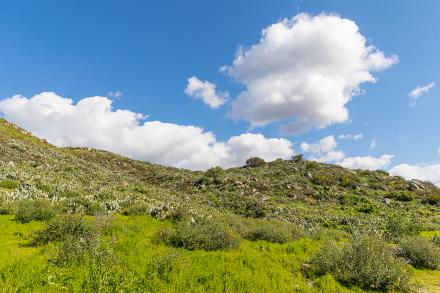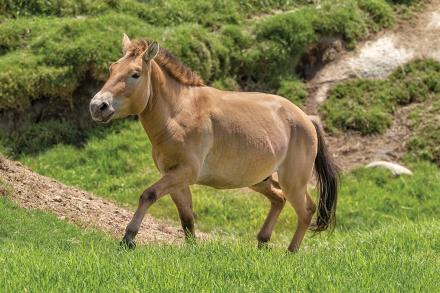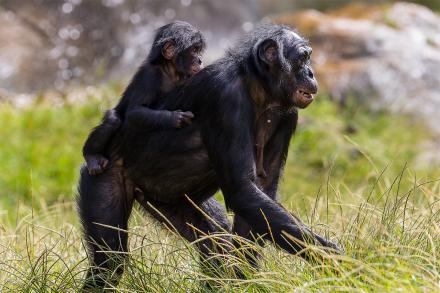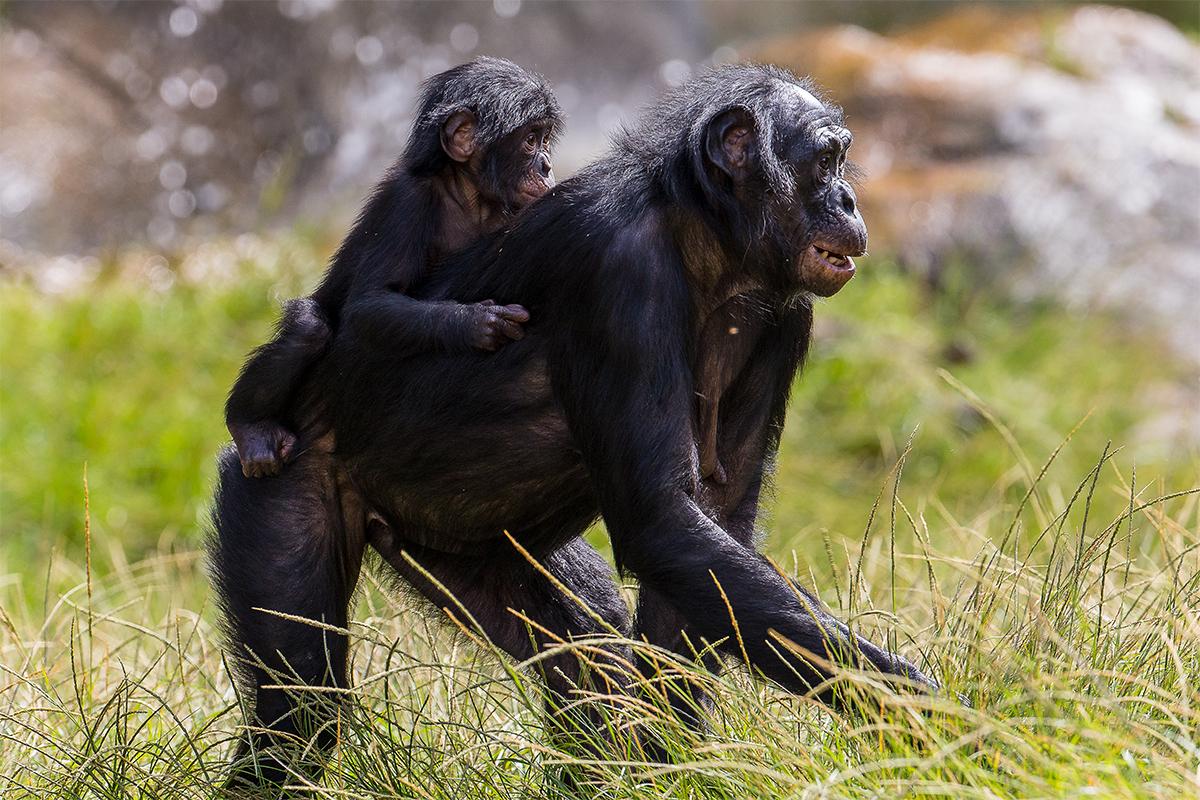
For wildlife, “mom” means a lot of different things.
In the world of wildlife, mothering comes in many forms. Just as in our own lives, there’s biological moms, adoptive moms, foster moms, and individuals that step up to take care of the young ones that need it. Some species are even matriarchal and led by the females in their group. From cubs and foals to chicks and calves, most little ones need a little help growing up, and that’s where “moms” of all kinds step in.
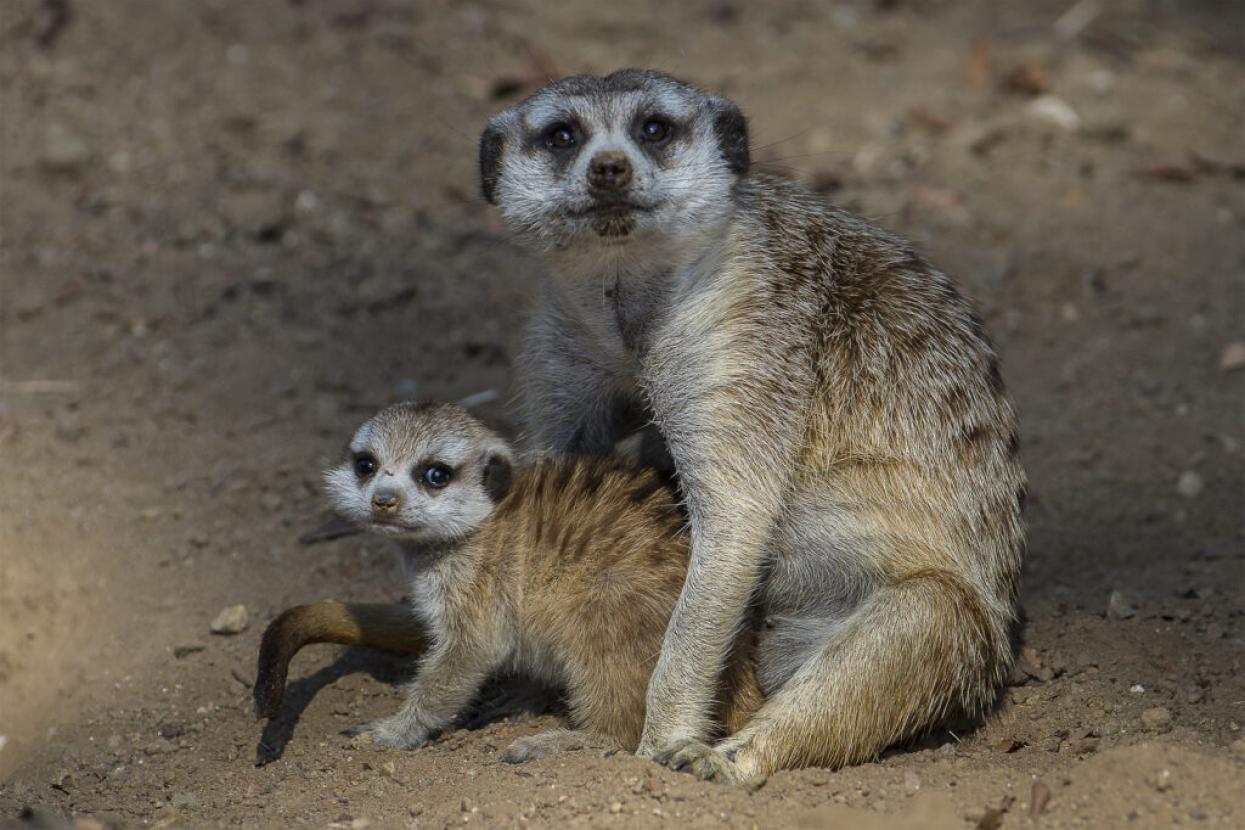
Matriarchal Meerkats
These mammals may be small, but they make up for it in numbers. Meerkats live in large groups of up to 40 individuals. Led by adult females, these groups are called mobs. Different family groups can work, live, and play together within the same mob, and each individual contributes to the overall health, well-being, and protection of one another. Mom meerkats teach their young pups what to eat and how to hunt, while the entire meerkat mob shares essential duties. Working together, they teach pups how to hide from predators, clean themselves, and defend their burrow.
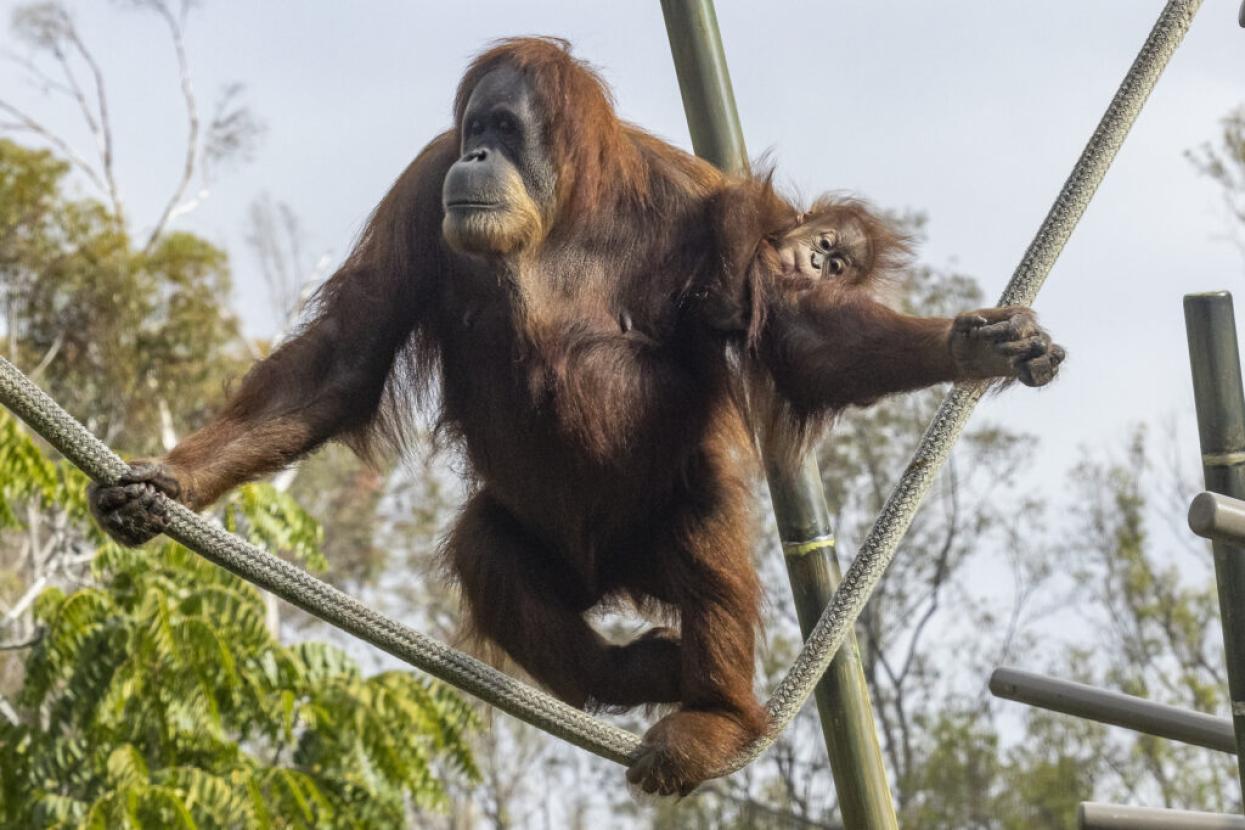
Slow and Steady
When Kaja was born at the San Diego Zoo, his mom Indah wasn’t initially able to care for him. Wildlife care specialists stepped in to raise the little orangutan. As they fed and cared for him, they’d even wear a suit with faux fur mimicking his mom’s so he could grab on, just as he would with her. Meanwhile, his care team never gave up on trying to reunite him with Indah. Kaja began integrating with the rest of the troop and slowly spent more time with his mom. Eventually, with determination and lots of time, Kaja and Indah were successfully reunited! The mother-son duo formed a strong bond, and Indah was even able to nurse him. Swing by to see this success story in action on your next visit to the Zoo.
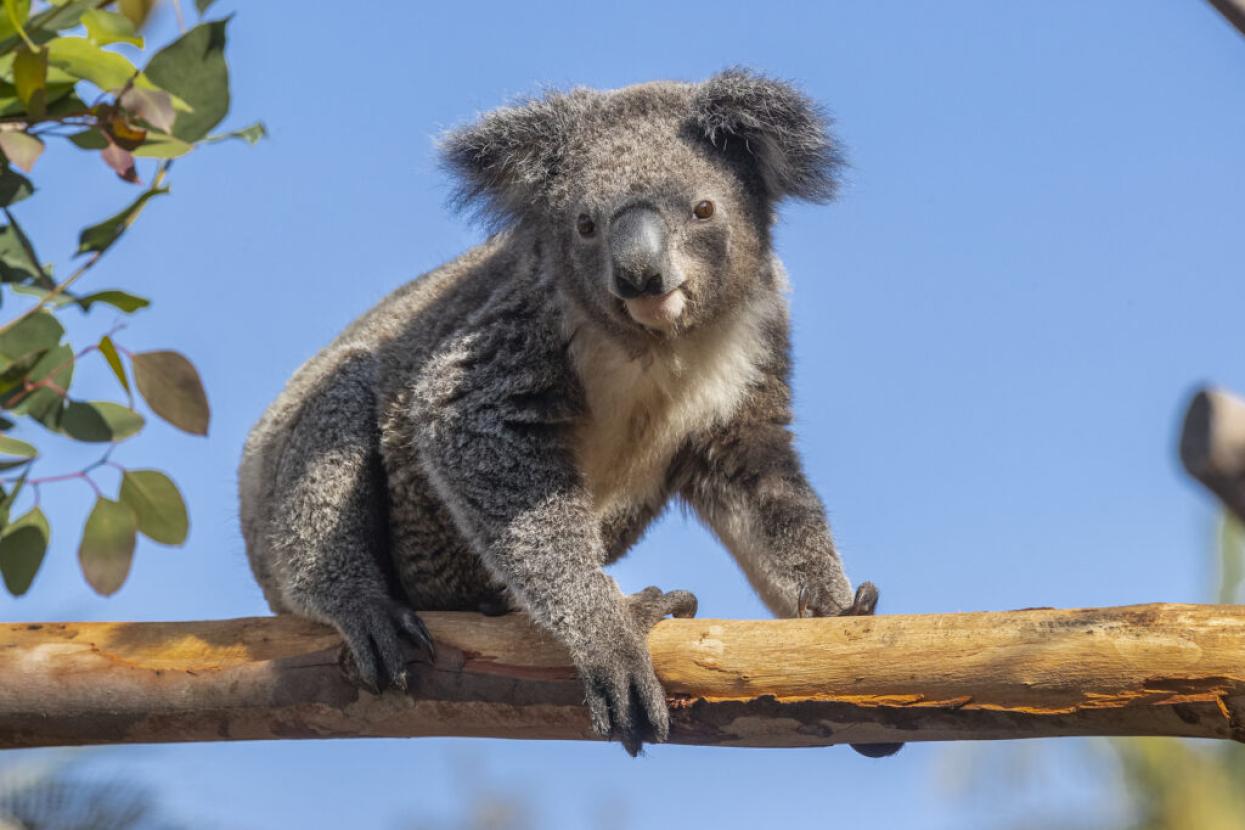
A Courageous Koala
Omeo was only five months old when his mother passed away from cancer. Koalas typically stay in their mother’s pouch until they’re six months old and are dependent on their moms for much longer. Tiny Omeo was still growing when he was orphaned, so the Zoo’s wildlife care team acted fast to step in and help him. Working around the clock, they made him a warm pouch to feel at home in, bottle fed him to help build up his strength, and acclimated him to the outdoors when he was ready. After their help, he eventually made the transition to a eucalyptus diet, which is the only food adult koalas eat. Today he is healthy, strong, and all grown up!
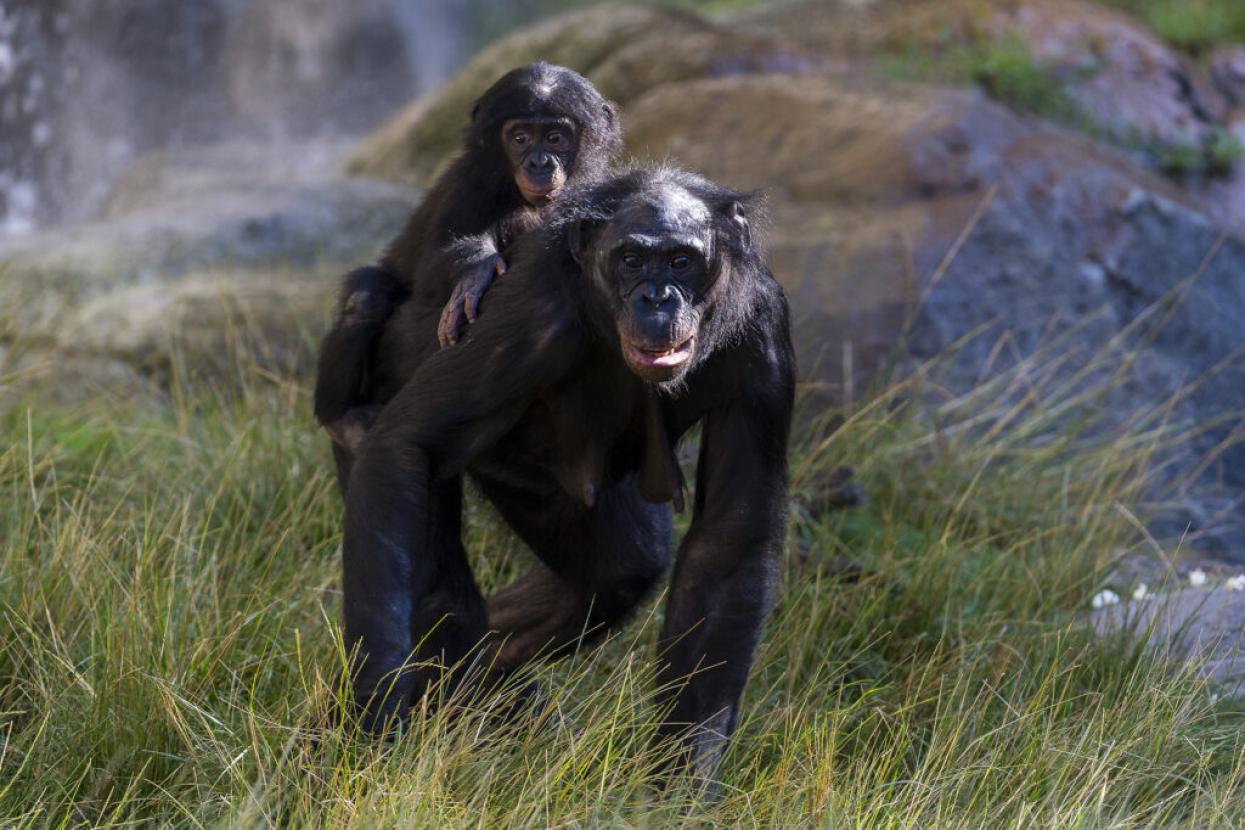
Bonobo Bonds
Looks can be deceiving. Bonobos and chimpanzees aren’t as similar as they appear. Their diets, behaviors, and locations in native habitat are just a few differences between these two primate species. Where chimpanzees can be aggressive, bonobo troops are known to be more harmonious. In fact, bonobos are the only group of great apes led by females.
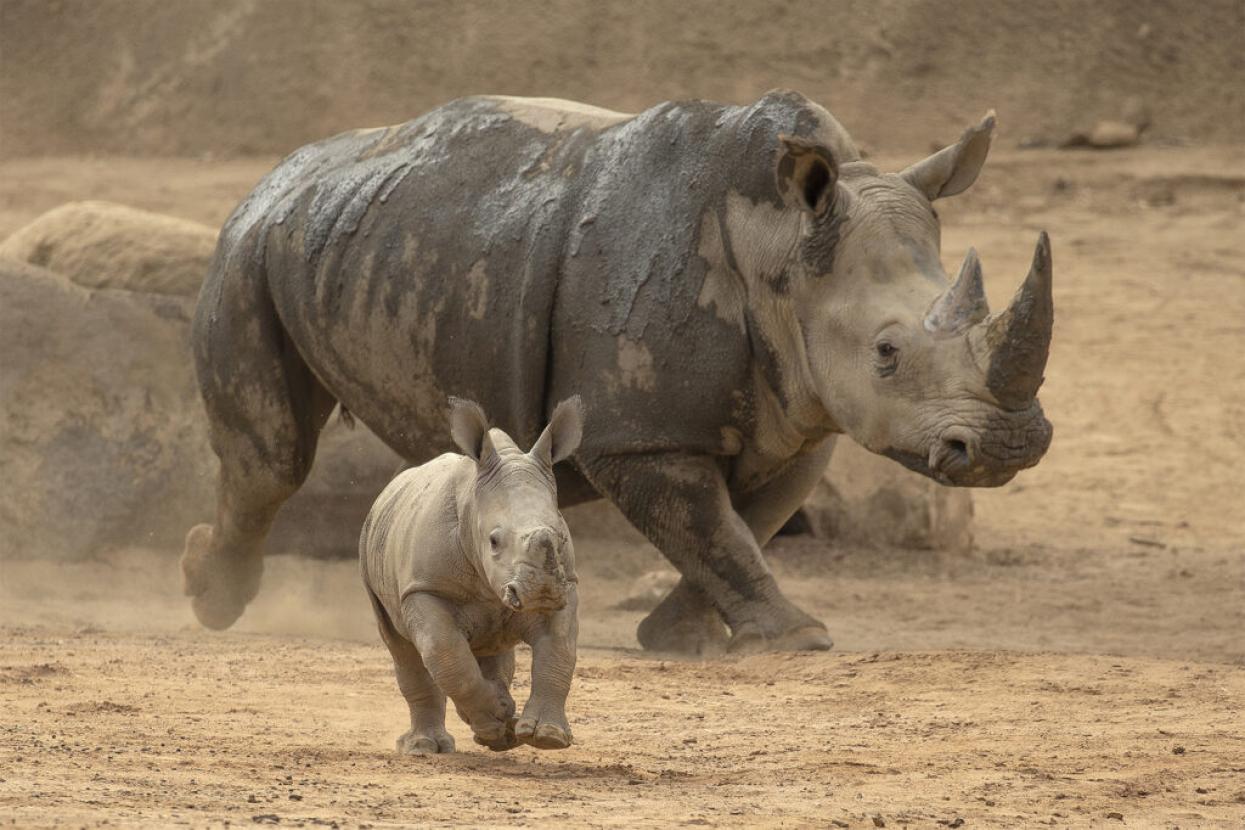
Livia’s Support
Just as they did with Kaja and Omeo, wildlife care teams step in to help when parents aren’t able to. It was no different for Arthur, a southern white rhino calf born at the San Diego Zoo Safari Park. But this time, they had a little extra assistance from a very special foster mom.
When Arthur’s mother couldn’t take care of him, he was raised by the experts at the Safari Park’s Nikita Kahn Rhino Rescue Center. Not only did he gain strength thanks to special rhino milk formula, but he was able to socialize with the herd and learn natural behaviors. Adult female Livia took a keen interest in Arthur. Soon after meeting him, she began acting as a foster mom, nurturing him and expertly keeping a watchful eye on him just as any other rhino mom would. Her natural maternal instincts were heartwarming to see and a sign she would eventually be a great mom to her own calf.
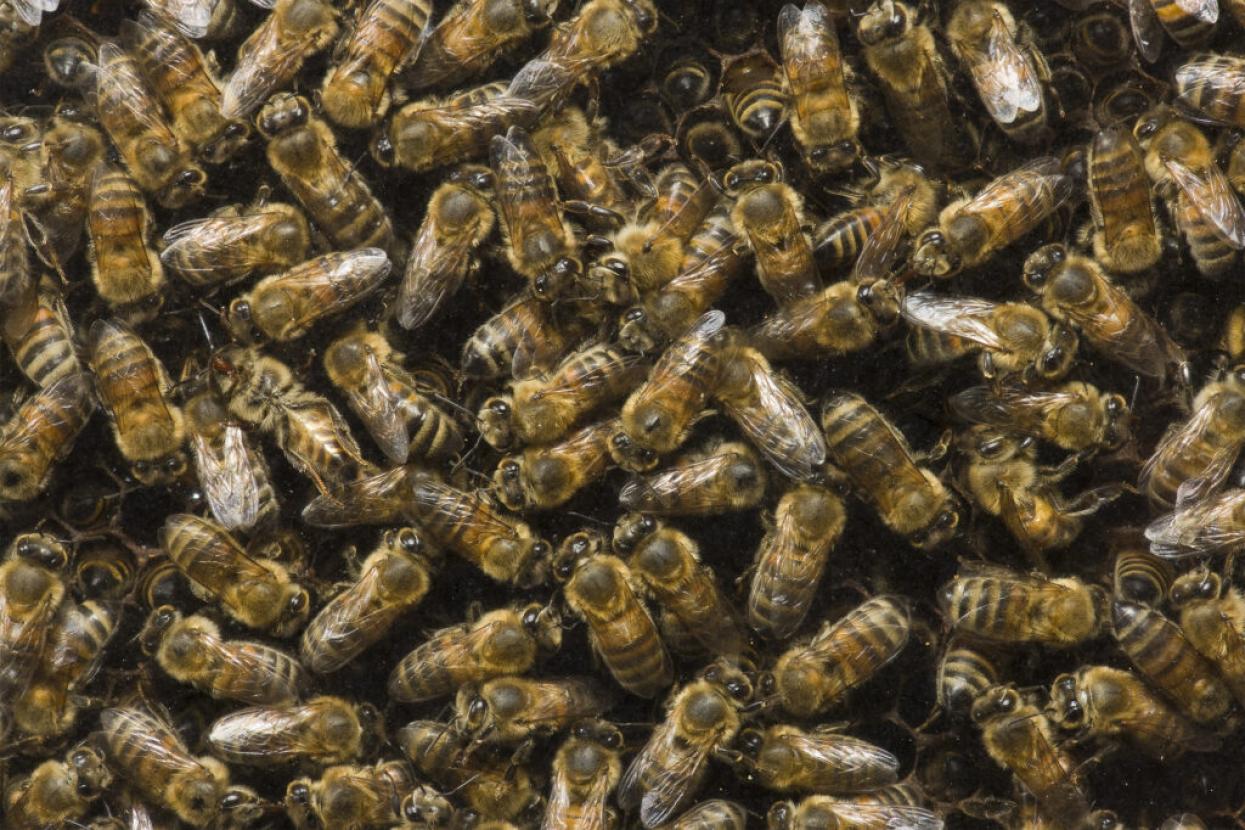
Follow the Leader
Queen bees are iconic leaders of the hive and the only females in any colony capable of reproducing. Not all species of bees live in colonies, but a queen bee is vital for those that do. She’s taken care of and fed by worker bees in the hive to ensure she lays as many eggs as needed. They’re so dependent on her that where she goes, the hive follows.
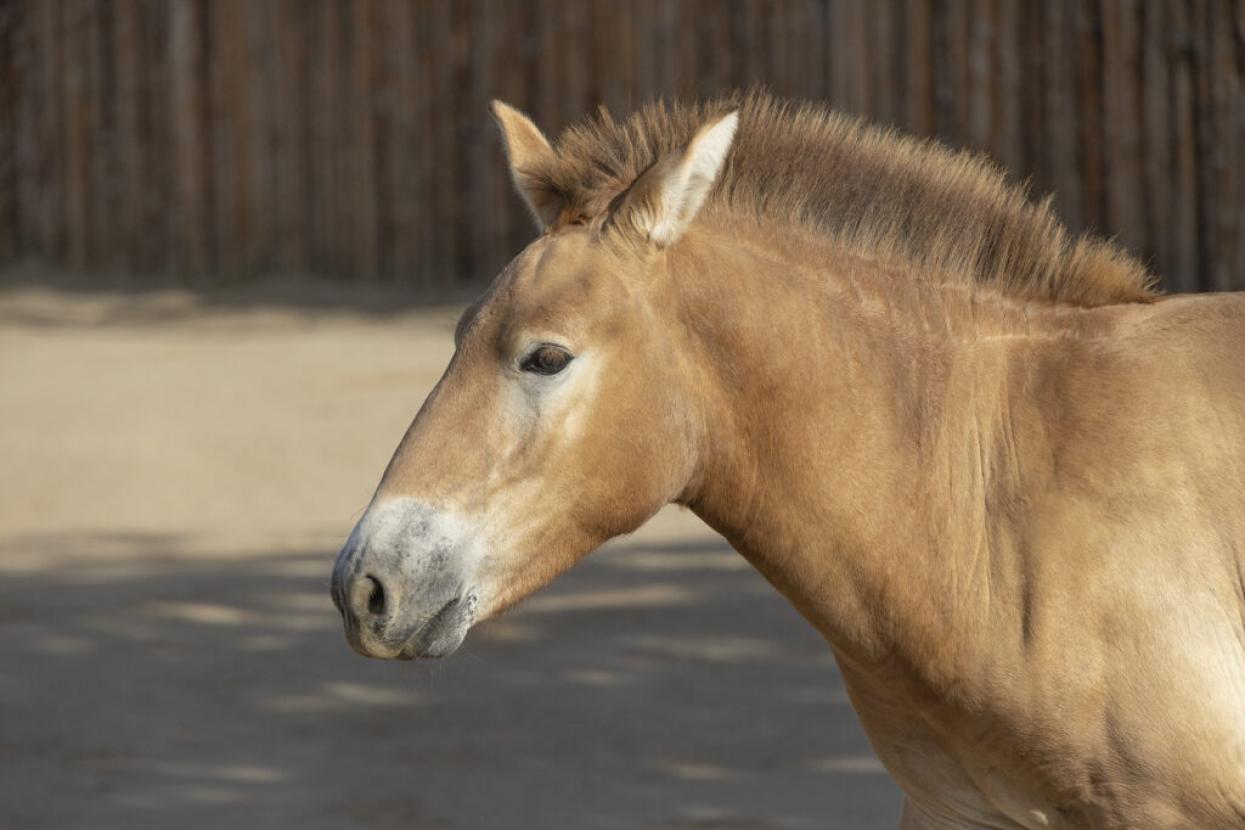
A Foal’s Journey
Ollie has a unique mom—she’s a different species than him! Ollie is the second-ever Przewalski’s horse clone, and vitally important to the future of his species. He was cloned from a stallion that lived more than 40 years ago and whose DNA was cryopreserved in our Wildlife Biodiversity Bank’s Frozen Zoo®. Born to a domestic horse mare named Sunflower, his birth marks the return of vital DNA that had been absent from the species’ global population, which is endangered. Ollie, along with Kurt, the first clone of this stallion, represents hope for the future of Przewalski’s horses and shows what’s possible when we innovate for wildlife.
Mothering comes in a wide variety of forms, whether it’s how a species approaches it or how individuals take on a role. Across the globe, wildlife follows their instincts to teach, nurture, encourage, and lead their little ones. It can be a team effort and an individual journey. There’s no limit to what “mom” means to wildlife, just as there’s no limit to what “mom” can mean for us.
Discover more about how we’re saving, protecting, and caring for wildlife across our eight Conservation Hubs and what featured species you can connect with yourself at the San Diego Zoo and Safari Park.

